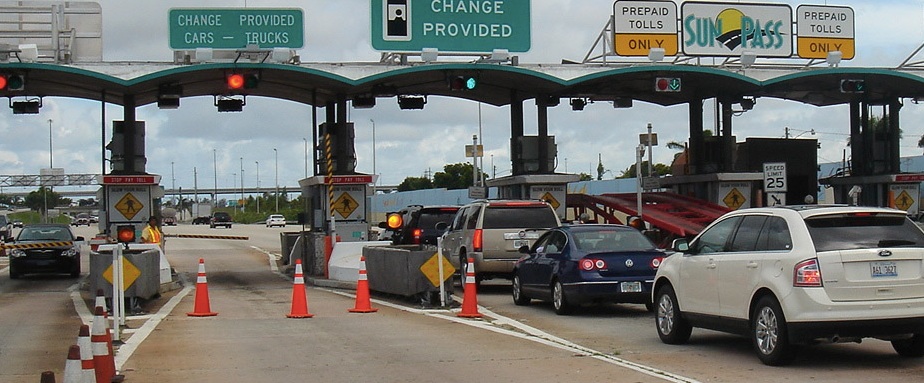What City Observatory did this week
1. Dirt Cheap. A number of tech startups are exploring techniques for high density urban farming. In theory, new methods, like vertical farming in plastic tubes, can greatly reduce the amount of land and water needed to grow certain crops, and offers the advantage of much shorter distances to consumers. Still, the big question is whether urban farming can produce food at prices that are competitive with conventional agriculture. Dirt is cheap, and the sunlight falling on it is free. Farmland is generally orders of magnitude less expensive than urban sites, so indoor growing has to be even more efficient to offset its cost disadvantages. A recent story in Fast Company about Bay Area startup Plenty dutifully echoes the talking points of proponents about technical advances, but is silent on how much this urban produce will cost.

2. The return to the city. In an article in the New York Times, Jed Kolko again challenges the idea that everyone is moving to cities. He finds that many US metros have become, in the aggregate, less dense in the past several years. We look at the evidence on the patterns of population and job growth, and note some of the limitations of county level data in judging these trends. It also seems to be the case the movement to city centers is increasingly bumping up against available housing supply, a trend confirmed by the widespread increase in city center housing prices compared to prices on the suburban periphery: It appears that even more Americans would like to live in the center than we have built housing to accommodate.
3. Just ahead: road pricing? The details of the Trump Administration’s infrastructure proposal seem to be coming into clearer focus. The headline $1 trillion number apparently will count on lots of private, state and local resources, and will actually reduce federal funding for many programs. The highway trust fund may lose its general fund transfers, which will mean less money for roads and transit. One bright spot, in our view: the administration is proposing to greatly liberalize state authority to impose tolls on federally funded roadways. This could encourage states to more widely apply road pricing strategies, which would be much more effective at fighting congestion.

Must read
Dan Savage, who mostly writes a sex-advice column for Seattle’s alt-weekly, weighs “Doing something real about gentrification.” As always, he’s readable and provocative–skewering anti-development gentrification critics–“If I meet one more anti-gentrification activist who moved to Seattle ten minutes ago, I shall scream.” But most of the column focuses on wonky bits that will be familiar to City Observatory readers: “Housing scarcity—exacerbated by the ridiculous amount of this city zoned for single-family housing—deserves as much blame for the displacement crisis as gentrification. More. And unlike gentrification (“a once in a lifetime tectonic shift in consumer preferences”), scarcity and single-family zoning are two things we can actually do something about. Rezone huge swaths of the city. Build more units of affordable housing.” Savage also urges a big increase in transit service and subsidies to low income transit users as a way of buffering the economic impact of urban growth. This is smart, opinionated and readable: share it with your less wonky friends.
Todd Litman, Gentrification for Better or Worse. For a counterpoint–if only stylistically–to Dan Savage’s exuberant essay on gentrification, we turn to the soft-spoken and even-handed Canadian, Todd Litman. Litman, who runs the Victoria Transportation Policy Institute, mostly does research on transportation policy, but turns his thorough and balanced analytical approach to the issue of gentrification. You’ll find a two-by-two table that tabulates the benefits and costs of gentrification for existing residents and newcomers, and weighs the relative importance of each. While far less vitriolic than Savage (indeed, not vitriolic at all), Litman reaches many of the same broad conclusions, stressing that its possible to have gentrification without displacement if the housing supply increases, and noting that opposing higher density development in an attempt to prevent gentrification is likely to backfire, driving up rents still further.
Aaron Renn on infrastructure policy. As the discussion of the Trump Administration’s potential one trillion dollar infrastructure policy heats up, you’ll find some very useful background material in Aaron Renn’s essay at American Affairs. He makes a number of very important points that are largely missing from the discussions in Washington. Chief among them: building new infrastructure is unlikely to be a major economic stimulus. “In short, our infrastructure systems are, by and large, built out. There is little need for a major deployment of new infrastructure, or new types of infrastructure. There do not appear to be any huge economic gains to be had from new infrastructure on par with those coming from electrification or building the interstate highway system.” Nor do much vaunted public-private partnerships offer any kind of panacea: private investors want to be paid back, and are adept at shifting risk to the public sector, and maximizing their own profit, often at the expense of taxpayers or system users. The most important tasks in the realm of infrastructure may be prosaic: regular maintenance, competent management, and solvent finance.
New ideas
Are ride-hailing services prompting people to sell their cars? A new survey from Reuters asks recent car sellers if they had replaced the vehicle they just sold. About a quarter of American adults reported selling (or trading in) a vehicle in the past twelve months. While the vast majority replaced their vehicles, some 9 percent of car sellers said that they had shifted to services like Lyft or Uber, rather than buying a new vehicle. About the same share of prospective car sellers report planning to do the same in year ahead. If this trend holds, it has important implications for urban transportation (as well as the finances of car makers).

